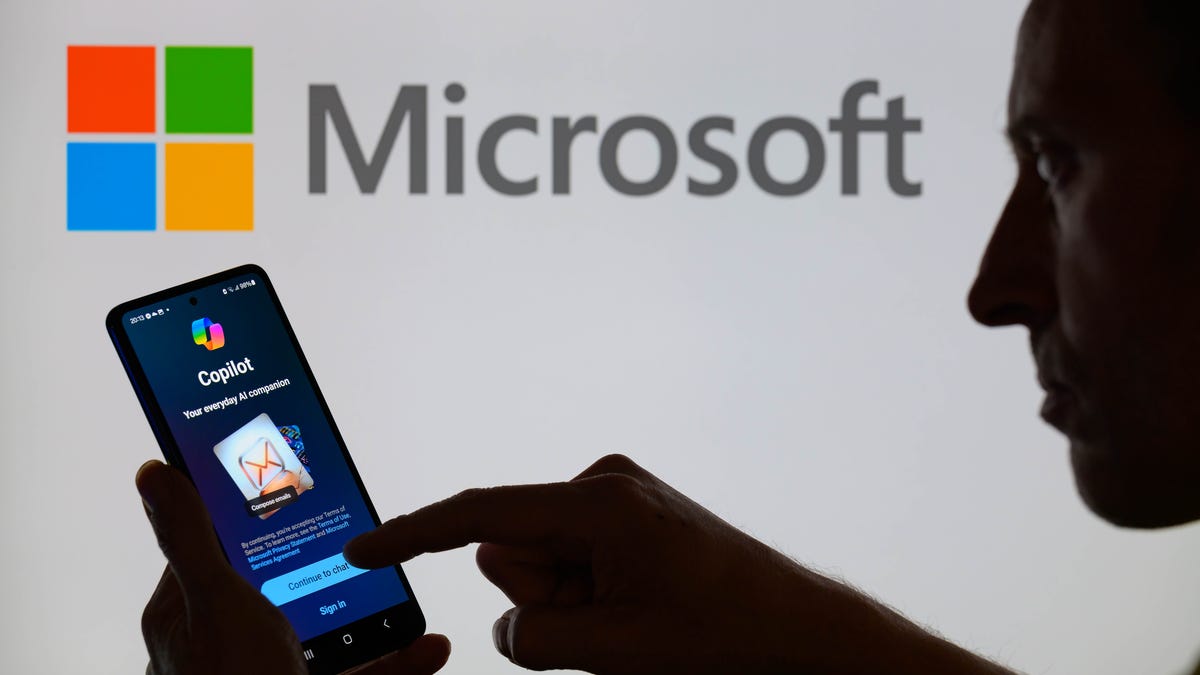Tech
Inside Microsoft’s AI strategy: Compete with everybody on everything

LOS ANGELES — At a Microsoft (MSFT) event here earlier this month, attendees sipped drinks and sampled hors d’oeuvres as Kendrick Lamar pulsed through the speakers. They meandered between rows of laptops, each demonstrating the latest capabilities of the company’s flagship AI product, Copilot. True to the city’s reputation, many of those present were influencers, filming their interactions with the technology for their followers.
Yet even these arbiters of digital trends seemed genuinely intrigued. The artificial intelligence updates on display marked a significant shift from Microsoft’s previous focus on business productivity, with features that appealed to a broader audience — including tech-savvy influencers.
The tech giant’s latest offerings represent a significant leap forward in personalized AI, integrating voice and vision features that promise to transform how users interact with the technology. Among the additions to Microsoft’s Copilot are a visual recognition tool, chatty conversational abilities, and a virtual news anchor.
Microsoft isn’t done with Copilot announcements, with even more updates announced at a London event Monday morning. The ambitious moves position Copilot as a direct challenger to AI products made by Apple (AAPL), Google (GOOGL), Adobe (ADBE), and even OpenAI, one of the company’s partners and the maker of ChatGPT.
By combining advanced language processing with visual and auditory capabilities, and envisioning how AI could help people throughout their day, Microsoft is aiming to become the go-to AI platform for both work and personal life.
The Copilot revamp is the first major initiative led by Mustafa Suleyman since his appointment as CEO of Microsoft AI. Suleyman, a co-founder of DeepMind and the startup Inflection AI, joined Microsoft earlier this year when the tech giant acquired Inflection.
“At Microsoft AI, we are creating an AI companion for everyone,” Suleyman wrote in a blog post.
Carolina Milanesi, the president and principal analyst at Creative Strategies, went to an accompanying Copilot launch event in New York and described it as Suleyman’s coming out party.
“It was the first time Microsoft talked about the consumer,” she said in an interview. Milanesi noted that some of the demos were running on iOS or Android devices, signaling Microsoft’s intent to reach users across all platforms.
Milanesi said it was also the first time she thought that Microsoft could appeal to the non-business side of people’s lives beyond search and gaming. The focus on the updated Copilot app, one of the primary ways to interact with the tech, is an especially important move, given how much time people spend on their phones. By launching it for iOS and Android, Microsoft has beaten both Apple and Samsung to the punch in bringing a comprehensive AI assistant to smartphones.
“Consumers are still not quite sure what the return on investment is,” Milanesi said of using phones with AI capabilities. “Having an app that delivers value to you is going to be easier to see versus when it’s embedded across the device.”
The strategy gives Microsoft a window of opportunity to establish itself in the mobile AI space before Apple rolls out its Apple Intelligence or Samsung embraces solutions like Google’s Gemini. Whether Copilot will live up to other offerings, Microsoft’s strategy is clear.
“Whatever they sell,” Milanesi said, “generative AI is part of it and will drive a differentiation in what they’re selling.”
AI in everything
Not long after investing a reported $13 billion in OpenAI last year, Microsoft announced AI assistants it calls Copilots, which plug into its biggest software products including Word, Excel and PowerPoint — all powered at least in part by ChatGPT. The Copilots are meant to make work easier by doing things like generating slide decks or creating notes from a Zoom meeting.
But Microsoft’s latest Copilot update reaches far beyond the workday, challenging a wide array of existing tools. Taking cues from OpenAI’s recent voice innovations in ChatGPT, Microsoft has given its AI assistant a human-like conversational ability. Users can now choose from four distinct voices and engage in natural, flowing dialogues with Copilot. The AI allows for mid-conversation interruptions and follow-up questions, mirroring the back-and-forth of chatting with a real person.
Even Microsoft’s Paint app, once the lowliest of visual editing tools, now comes with generative AI abilities that compete with Adobe’s Firefly. A feature in the app called Image Creator lets users generate images from any text description. Doodlers can sketch out a basic scene and have Paint make it more elaborate and realistic, using a creativity slider to adjust the output.
Updates to Microsoft’s Edge browser, which has Copilot built-in, can now summarize page contents in Bing searches, a shot across the bow at Google’s rocky foray into AI-infused search.
Other updates also take on Google. Copilot Daily creates audio summaries of the news that rival NotebookLM, a Google AI product that can take text and generate a podcast in minutes.
But at the heart of Copilot’s overhaul is Microsoft’s ambitious foray into visual AI: Copilot Vision. This feature gives the assistant the ability to comprehend and analyze the content of web pages in real-time, effectively allowing it to “see” alongside the user. By integrating this visual acuity with its enhanced voice capabilities, Copilot can now engage in nuanced, context-aware dialogue about on-screen content — be it text, images, or multimedia. So far, only a select number of paid subscribers have access to this service.
Even with all these announcements, Gil Luria, an analyst at D.A. Davidson, downgraded his rating on Microsoft stock from “Buy” to “Neutral.”
“Our perspective on Microsoft is still very positive,” Luria said in an interview. “They’re doing a lot to provide both enterprise and consumers with AI tools. Our recent downgrade is predicated more on the fact that we think that in many regards, Amazon (AMZN) and Google have caught up, and in some regards they’re even in the lead.”
Luria said that while Microsoft is ahead of the curve for many AI offerings, AI chip development, a very time-consuming process, is a key area where Microsoft lags its rivals. Google started work on its chips over a decade ago, with Amazon following a few years later.
“Microsoft was a little late to the party in realizing that they can’t just depend on Nvidia (NVDA),” Luria said, referring to the AI chipmaking behemoth. “So they’ve only had a couple of years of development into their products.”
D.A. Davidson has found that while Amazon and Google have extensively deployed their own custom chips across their data centers, Microsoft has not achieved the same level of broad deployment.
“They started their chip development later than Amazon and Google,” Luria said. “But apart from that, they’re doing what they need to do.”
The future of Microsoft AI’s play
Microsoft rode the wave of AI enthusiasm in 2023, with its stock surging almost 57% last year. But 2024 has proven to be a more challenging landscape for the tech giant. Microsoft stock has risen about 12% so far this year, trailing most of its peers and even the broader S&P 500 index.
While Microsoft has not yet disclosed specific revenue figures for generative AI products such as Copilot, the company has provided some insight into AI’s impact on its business. During its last quarterly earnings call in July, Microsoft said its cloud service saw 29% year-over-year revenue growth, with 8 percentage points of that growth attributable to AI services.
If it becomes a seamless part of people’s lives, Microsoft’s Copilot could unlock new revenue streams and solidify the company’s position in both consumer and enterprise markets. The challenge lies in creating AI tools that are not just innovative, but indispensable to users’ daily lives and work processes.
“Our task is to ensure AI always enriches people’s lives and strengthens our bonds with others, while supporting our uniqueness and endlessly complex humanity,” Suleyman wrote. “This is a new era of technology that doesn’t just ‘solve problems,’ it’s there to support you, teach you and help you.”









